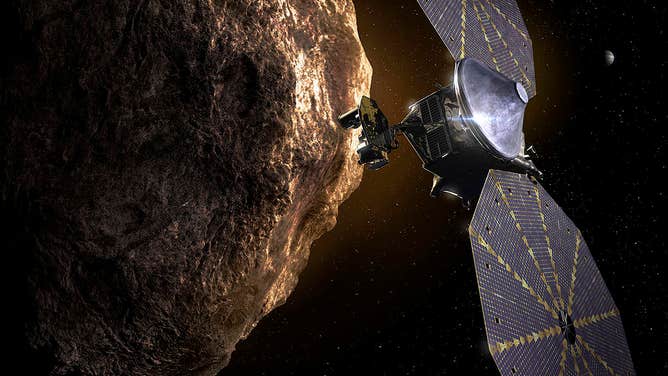NASA working to resolve solar troubles for asteroid mission
Only one of two solar wings deployed after Lucy arrived in space

This illustration shows the Lucy spacecraft passing one of the Trojan Asteroids near Jupiter.
(Southwest Research Institute)
NASA's asteroid-chasing spacecraft suffered a setback after launching last weekend when only one of its two solar wing-like arrays deployed.
The Lucy spacecraft mission is designed to study the Trojan Asteroids associated with Jupiter during a 12-year journey. The asteroids are billions of years old and thought to contain clues about how the solar system formed.
Lucy launched Saturday morning from Florida but soon after deployment NASA said it learned one of the arrays functioned as planned, but the second wing partially unfurled in space.
The spacecraft has two substantial solar wings, 24-feet each, to power the mission.
"The team continues to look at all available engineering data to establish how far it is deployed," NASA managers wrote in an update Wednesday. "That solar array is generating nearly the expected power when compared to the fully deployed wing. This power level is enough to keep the spacecraft healthy and functioning."
Lucy's team will try again to unfurl the solar array at the end of next week.
Meanwhile, other milestones in orbit have gone well. The spacecraft successfully fired its thrusters to manage its momentum.
Other operations will have to wait until the solar array deployment is resolved.
The first maneuver in space to set Lucy on its trajectory is currently scheduled for mid-December.
Lucy will use Earth's gravity twice to slingshot out into deep space and catch up with the asteroids.
Lucy will travel 4 billion miles over 12 years to complete its mission. Using a suite of science instruments on board, the spacecraft will fly by eight asteroids: one from the main asteroid belt and seven of the Trojans.
The team continues to evaluate if this will impact the mission long term.